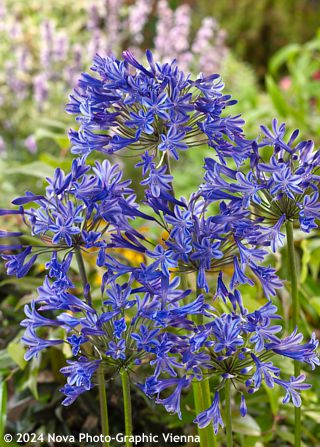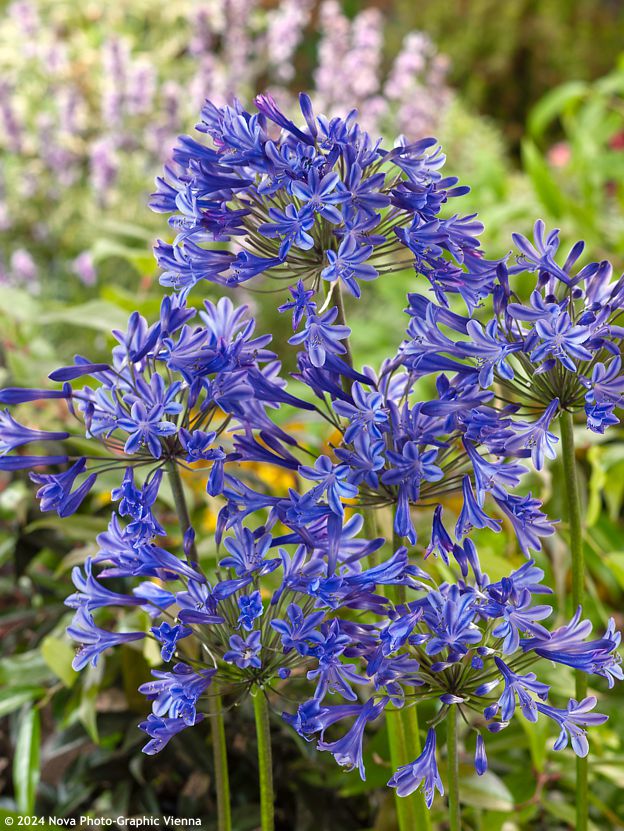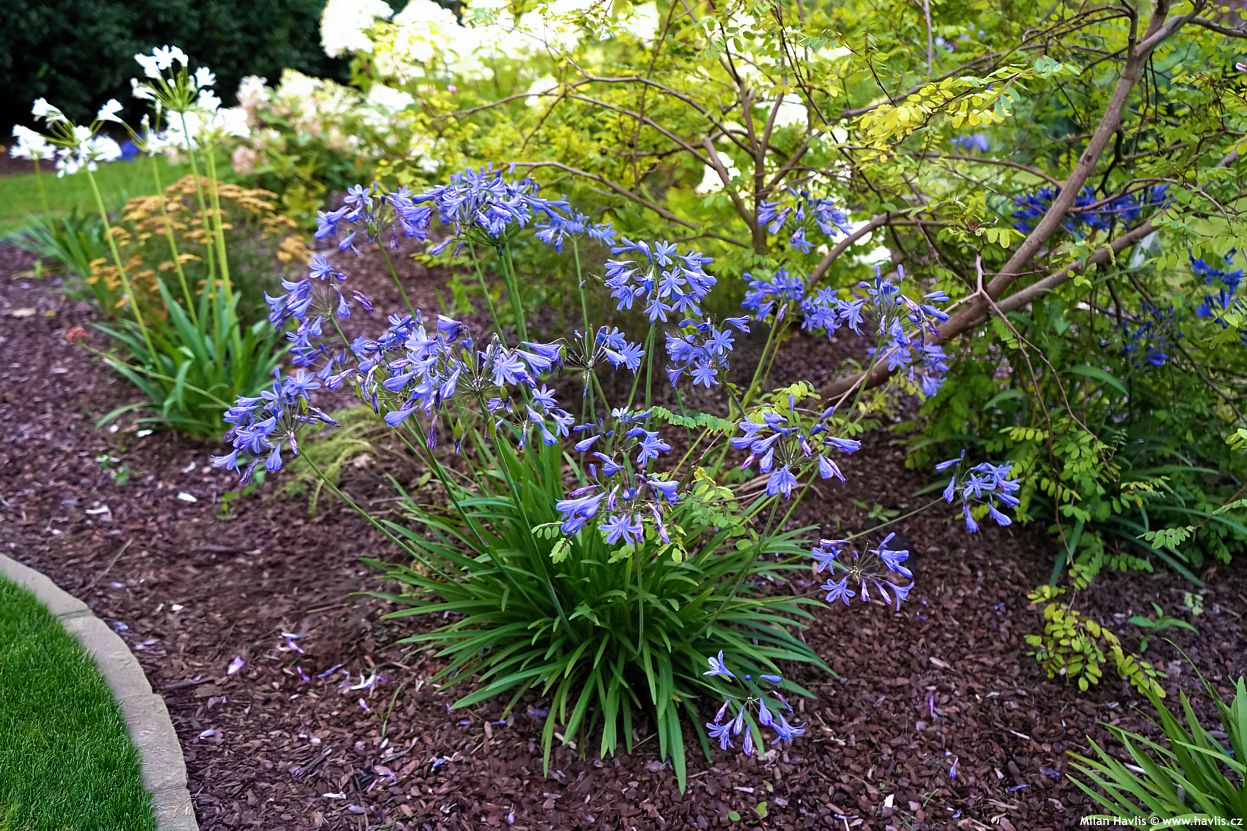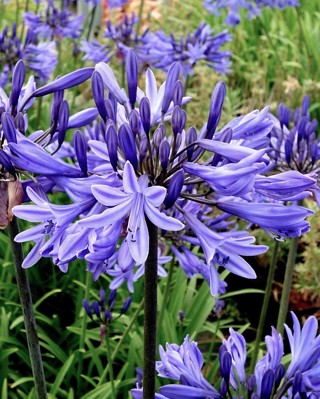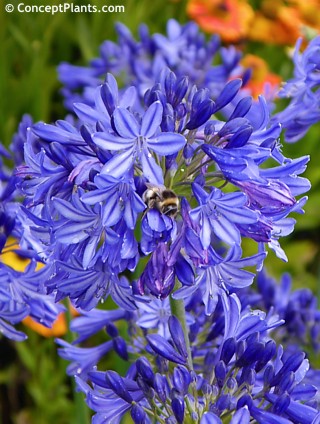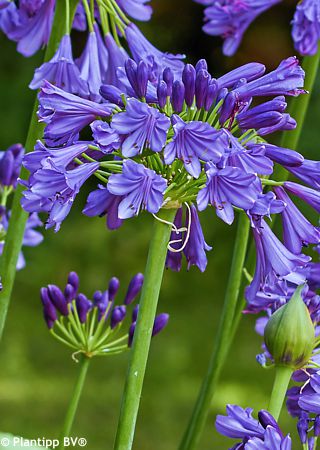Agapanthus 'LAPIS LAZULI' African blue lily
size/type
mid-sized perennial,mid-sized perennial
usual height
0,4-0,6m
usual width
0,3-0,5m
leaves
deciduous broadleaf
colour of leaves
flowers
showy
colour of flowers
blooming time
July-August
location
full sun
soil type
any (acidic to alkaline)
soil moisture requirements
evenly moist but well-drained
USDA zone (lowest)
7 (down to -23°C)
winter protection
for zone 5+6

for zone 7

categorized
Agapanthus
African blue lily is one of the most attractive summer plants. Even though this perennial comes from South Africa where less hardy species are grown, new varieties and hybrids are bred all over the world, especially in hot climates such as south USA, Australia, and South Africa. Great Britain with much of its part in subtropical zone would have been ideal for African blue lily, too, if it wasn’t for the excess wet. Therefore, in the 40s of the 20th century Hon W J Lewis Palmer, vice-president of RHS (Royal Horticultural Society of Great Britain) from Headbourne Worthy Grange in Hampshire, spent much of his time hybridizing them in order to achieve hardy varieties that could cope with English moisture, too. They were called Headbourne Hybrids, and if we do what they need we can grow them here in Central European climate, too. Numerous new hybrids were raised by other breeders ever since and they are often said to belong in this group. We know that it is not true, however, we are happy to have them since they can survive our winters.Description of the plant:
Lapis Lazuli agapanthus was bred in Taranaki, New Zealand, a region on the western side of the North Island known for its mild maritime climate with frost-free winters, frequent rainfall, and not-too-hot summers. The combination of tolerance to moisture (unlike the African drought-loving species), the genetic makeup of deciduous (i.e. frost-resistant) parents, and the lack of need for southern doses of sun and heat have resulted in one of the hardiest agapanthus varieties we've ever cultivated.Lapis Lazuli is a narrow-leaved darling with deciduous leaves similar to liriope – medium green, narrowly ribbon-like, and not too long. From the beginning of July it produces 40-60 cm long stems with numerous buds arranged in terminal umbels, similar to the flowers of ornamental garlic. Individual flowers are elongated bells of a violet purple colour with several prominent darker stripes. They open gradually from the sides to the top, so the flowering of one stem lasts quite a while. It blooms over a long time, often producing flowers throughout July and August in Central European conditions.
Grow it in fertile, very well-drained soil. In too wet or boggy soil it will most certainly die. The plant benefits from regular watering and fertilizing from spring until late summer. Though, once established it perfectly withstands drought and heat. In the Mediterranean it belongs among the top favourite summer blooming plants. In our gardens it will be a perfect flowering feature along pathways, at swimming pools, and near patios where you spend most of your relaxing time in summer.
In zone 7 all winter protection it needs is mulching. In colder areas you can double the mulch pile and cover it with a waterproof shelter to keep it from soaking with water and rotting afterwards. At the end of winter, after the danger of severe frosts, remove the waterproof cover and half of mulch, and in spring, when the temperature gets warmer, remove the rest of the mulch and cut off all leaves so that the plant can begin new growth. So far it has withstood winter temperatures down to -23 °C (USDA zone 6).
Last update 31-12-2024
QUICK PRICE OVERVIEW
CURRENTLY SOLD OUT
WANT TO TRY A SIMILAR PLANT?












